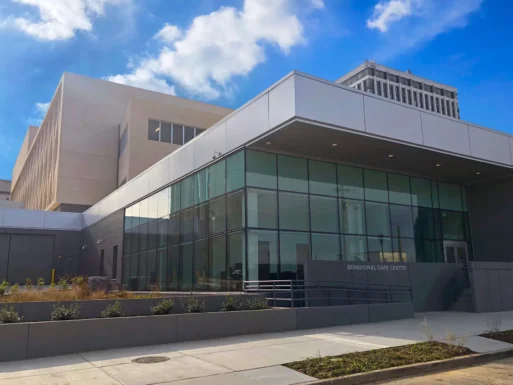
Nashville’s Behavior Care Center is a first-of-its-kind, licensed mental health/addiction treatment facility built inside a jail complex.
(11-22-2024) Are residential mental health and addiction centers located inside jails in our future? Should they be?
Earlier this month, I spoke to an elite group of sheriffs in Nashville attending a Large Jail Network conference. The LJN is composed of senior officials from the largest jails in the United States. This meeting focused on jails becoming the de facto largest public mental health facilities in our country. (The LJN was established in 1989 by the National Institute of Corrections, a part of the U.S. Justice Department.)
Nashville was chosen because Davidson County Sheriff Daron Hall operates a first-of-its-kind 60-bed Behavioral Care Center (BCC) as part of his jail. This is not a separate cellblock where arrestees with mental illnesses and/or addictions are housed and seen by a visiting psychiatrist or social workers. The BCC is a state licensed, residential treatment center adjacent to the jail where individuals charged with crimes – that are clearly linked to their addiction and/or mental illnesses – can have the criminal charges against them dropped if they complete a rigorous treatment regime while incarcerated.
An innovator, Sheriff Hall carved out money from his budget to construct the BCC four years ago. It is a separate, modern building that is only linked to the jail by a single hallway. He told a reporter from the Memphis Commercial Appeal, “I’m interested in why people are here [in jail], not who is here.” That curiosity is what prompted him to create a “specific diversion program aimed at decriminalizing mental illness.”
When I toured the BCC, I couldn’t tell much difference between it and a modern residential treatment center not connected to a jail. It doesn’t look like a jail. Each arrestee receives an individualized treatment plan when they enter the program. The length of stay depends on how well an arrestee does during treatment. You can be returned to jail if you violate the rules. Most arrestees are released after thirty days with the charges against them either being reduced or dropped.
The sheriff’s website states: “Treatment at the BCC includes: Individual Therapy, Group Therapy, Medication Management, Peer Support, and Discharge Planning. After stabilization at the BCC, the discharge specialist’s goal is to connect each resident with community resources and ensure continuity of care. Residents receive follow-up calls after discharge to confirm their plan is still working and to provide additional services as needed.”

Sheriff Hall speaks at BCC which he created
In other words, the BCC does exactly what a well-run and well-funded treatment facility should do – help individuals get the treatment that they need and discharge them with wrap around community services that help them thrive. (This must include access to housing!)
At the conference, I lauded Sheriff Hall for creating the BCC and applauded those sheriffs who expressed interest in creating separate treatment centers as part of their facilities. However, I also mentioned my concerns about creating mental health treatment units inside jails.
No one should have to get arrested to get treatment and constructing jail based centers should never become a way for communities to get around the outdated IMD exclusion or reduce pressure on communities to fund supportive treatment not tied to jails.
We know that law enforcement officers deal with more individuals in mental health crises than psychiatrists do. We also know that forty-percent of individuals with serious mental illnesses will have a potentially volatile confrontation with police. We can’t ignore that some individuals will be arrested and some should. This is why Crisis Intervention Team training, pre-arrest diversion, the Sequential Intercept Model, mental health dockets, and post-division programs are important tools. Based on these realties, what Sheriff Hall has created should help people get treatment and reduce inappropriate incarceration.
But let’s never forget that our goal should be getting people help before they get arrested and the best way to do that is through well-funded community treatment services, especially those aimed at first break psychosis.



